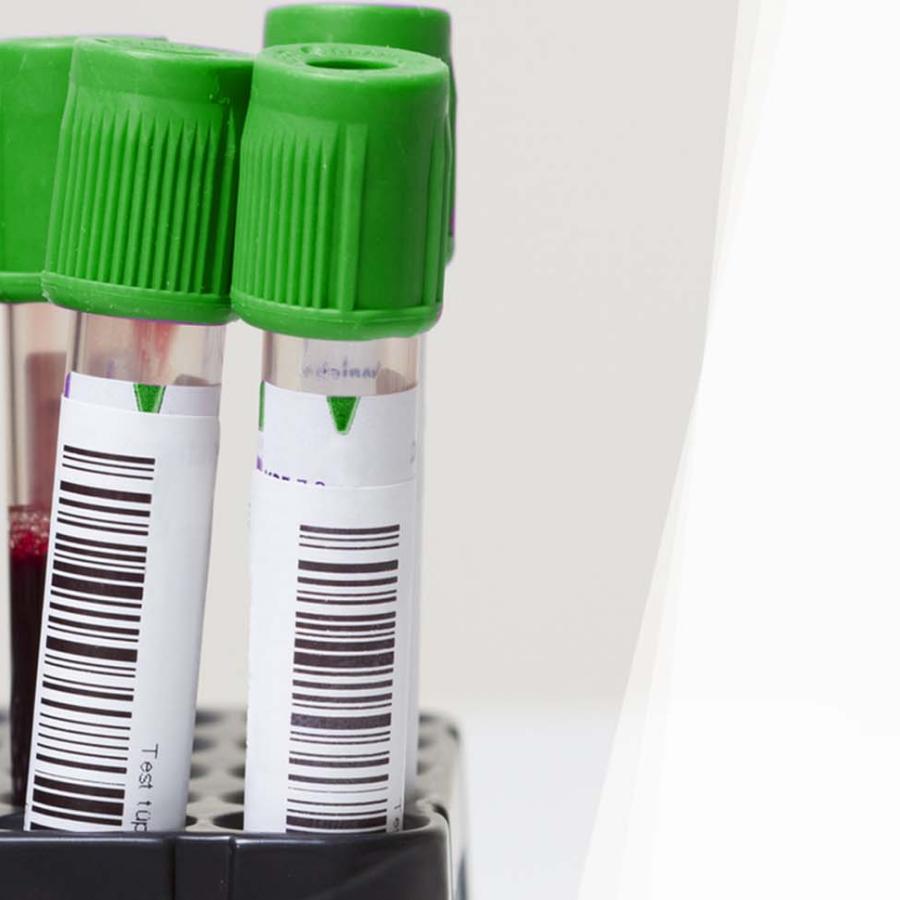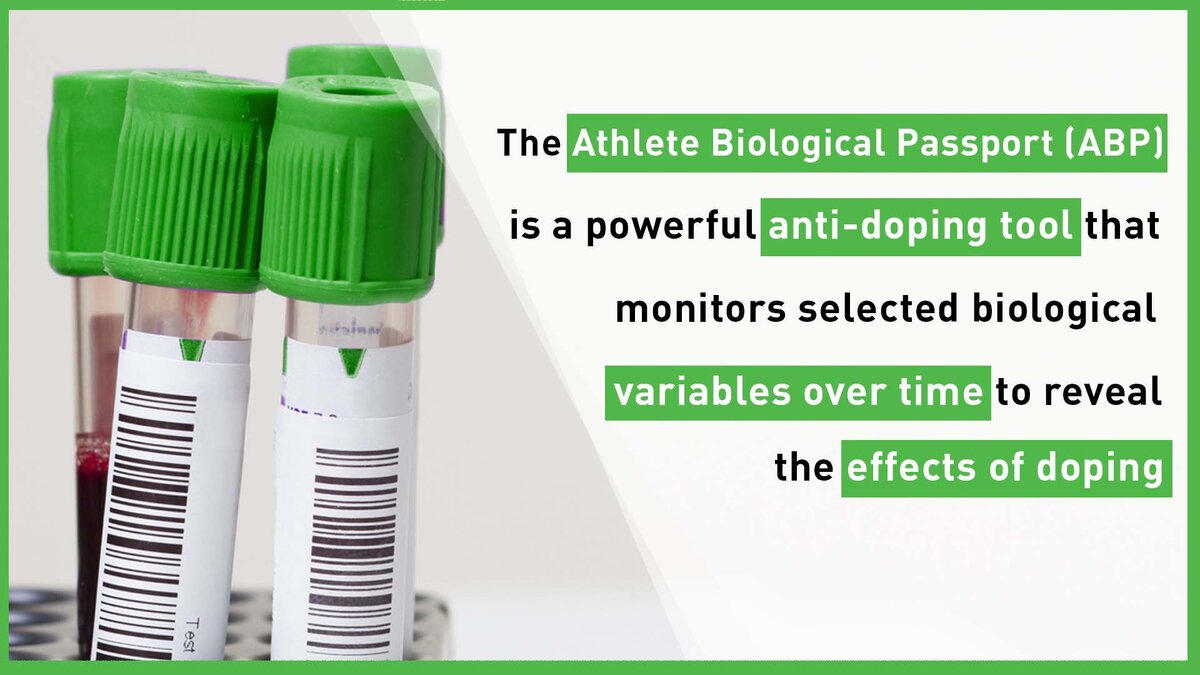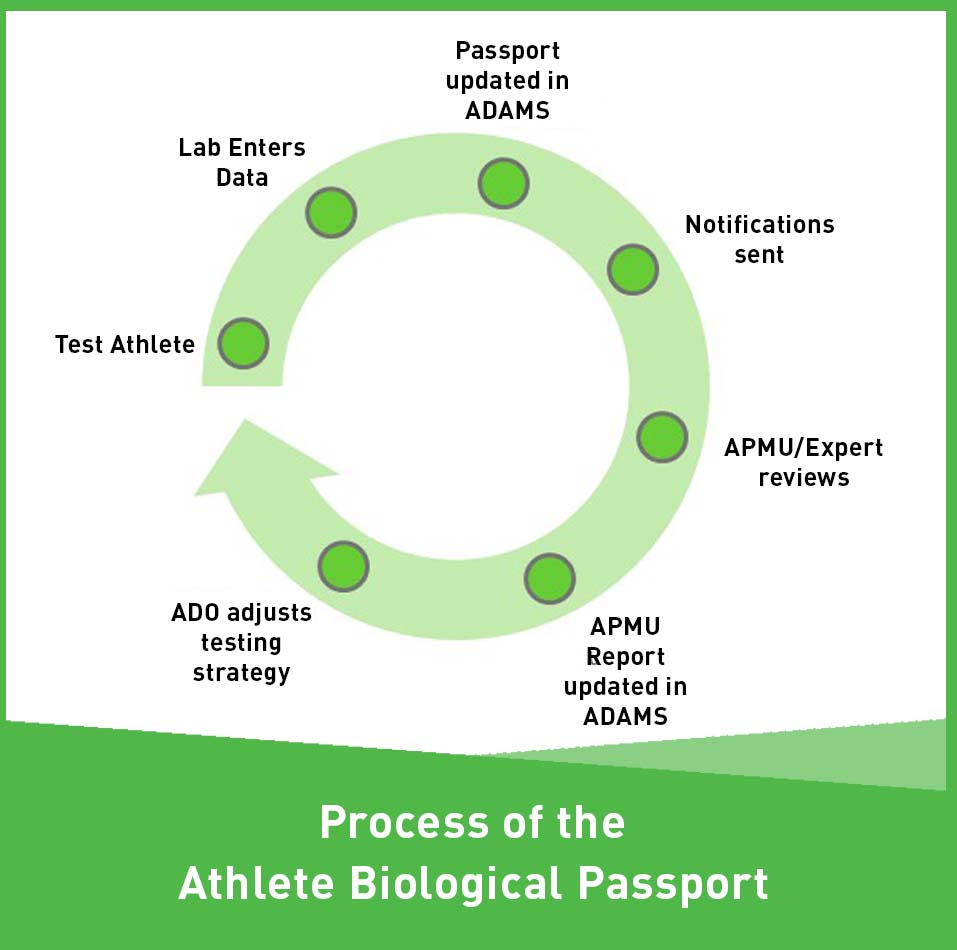Story
WADA’s Athlete Biological Passport: an important tool for protecting clean sport


In this latest edition of ‘Spotlight’, which keeps stakeholders up to date on the activities being carried out by the World Anti-Doping Agency (WADA) team and its partners, we look at the Athlete Biological Passport (ABP), a powerful anti-doping tool that monitors selected biological variables over time to reveal the effects of doping rather than attempting to detect the doping substance or method itself. Previous ‘Spotlight’ features are available on WADA’s website.

HISTORY
The term “Athlete Biological Passport” was first coined in the early 2000s by anti-doping’s scientific community when monitoring selected haematological variables over time in order to uncover blood doping. In conjunction with stakeholders and medical experts, WADA took a leading role to further develop, harmonize and validate the concept. The result was WADA’s first set of ABP operating guidelines for Anti-Doping Organizations (ADOs) that were published in 2009, which were designed to support their implementation of the Haematological Module. Then, in 2014, the Steroidal Module was launched in order to establish longitudinal profiles of an athlete’s endogenous steroid variables in urine.
THE ABP PROGRAM
The ABP Program is based on a combination of statistical analysis of laboratory results and human evaluation of Passport data in order to identify athletes or specific samples requiring further attention.
The ABP Program is currently composed of two modules:
1. The Haematological Module, introduced in December 2009, which aims to identify enhancement of oxygen transport, including use of erythropoiesis-stimulating agents (ESAs) and any form of blood transfusion or manipulation. This Module considers a panel of biomarkers of blood doping that are measured in an athlete’s blood sample.
2. The Steroidal Module, introduced in January 2014, which aims to identify use of anabolic androgenic steroids (EAAS) when administered exogenously (i.e. not naturally produced by the human body) and other anabolic agents, such as selective androgen receptor modulators (SARMS). This Module considers a panel of biomarkers of steroid doping measured in an athlete’s urine sample.
 WADA ABP Manager, Dr. Norbert Baume, said: “Passport management involves coordination and collaboration between Anti-Doping Organizations and their respective Athlete Passport Management Units (APMUs), the latter of which have specific expertise in Passport data interpretation and are housed within WADA-accredited laboratories worldwide. APMUs review Passports, without knowing the identity of the corresponding athlete, and can send atypical Passports to external experts for additional review and make recommendations to ADOs for follow up actions – including target testing. The APMU network is essential for providing rapid, objective, and high-quality management of the global pool of Passports.”
WADA ABP Manager, Dr. Norbert Baume, said: “Passport management involves coordination and collaboration between Anti-Doping Organizations and their respective Athlete Passport Management Units (APMUs), the latter of which have specific expertise in Passport data interpretation and are housed within WADA-accredited laboratories worldwide. APMUs review Passports, without knowing the identity of the corresponding athlete, and can send atypical Passports to external experts for additional review and make recommendations to ADOs for follow up actions – including target testing. The APMU network is essential for providing rapid, objective, and high-quality management of the global pool of Passports.”
To ensure fair and consistent review of Passports based on the most up-to-date scientific knowledge, in 2021, WADA’s Science and Medicine Department launched the ABP Haematological Expert Education program aimed at experts reviewing Passports in the Anti-Doping Administration and Management System (ADAMS) on behalf of ADOs. This program is accessible to ABP Experts on WADA’s Anti-Doping Education and Learning Platform (ADEL) and includes reference material and a dedicated webinar series.

THE ABP IN PRACTICE
The primary objectives of ADOs integrating the ABP into the framework of a robust anti-doping program are twofold:
1. To identify and target athletes for specific analytical testing by intelligent and timely interpretation of Passport data. For the Haematological Module, this includes analysis for erythropoietins and agents affecting erythropoiesis, and for the Steroidal Module, this includes Isotope Ratio Mass Spectrometry (IRMS) analysis to detect natural endogenous steroids administered exogenously.
2. To pursue possible anti-doping rule violations (ADRVs) in accordance with Article 2.2 (Use or attempted use by an athlete of a prohibited substance or a prohibited method) of the World Anti-Doping Code (Code).
Thus, the ABP can be used to directly sanction athletes, but also drives other anti-doping decisions such as the decision to collect additional samples from the athlete, to further analyze existing samples by other analytical methods, to investigate an athlete or group of athletes, or to place a specific sample for that athlete into long-term storage for future re-analysis.
With more than 180 ADRVs based directly on the ABP to date, the Program also continues to be successful in its application to drive and support specific investigations. In particular, the ABP was used to establish several cases of urine sample exchange, which formed the basis for further investigation by WADA’s Intelligence and Investigations (I&I) Department. This included Operation Arrow, which was part of I&I’s investigation into weightlifting that they launched in 2017.

WADA’s Associate Director responsible for the ABP Program, Dr. Reid Aikin, said: “The ABP is essentially a tool to translate an individual’s biological data into specific anti-doping actions. It can provide robust evidence that can be used to directly sanction athletes; and, it is also used behind the scenes to inform many other anti-doping activities such as test distribution planning and investigations.”
Growth in the use and impact of the ABP has continued in 2021 with use by over 190 ADOs worldwide, including National Anti-Doping Organizations and International Federations as part of their strategic anti-doping programs.
ONGOING DEVELOPMENT AND FUTURE OF THE ABP PROGRAM
In line with the “Lead” and “Grow Impact” priorities of WADA’s 2020-2024 Strategic Plan, the Agency continues to lead development of the ABP, in collaboration with stakeholders worldwide, by refining the Haematological and Steroidal Modules; as well as, developing and implementing new ones. At present, WADA is also looking at ways to increase the impact of the ABP in protecting clean sport by further scientific development of the ABP as an anti-doping tool, and by expanding its use by ADOs worldwide.
One example is the ongoing development of an Endocrine Module to better detect the abuse of hormones, starting with growth hormone (GH). In 2020, WADA formed an Endocrine Analytics Working Group to make recommendations to the Agency regarding the specific analytical and external quality control scheme requirements for this Module.
In 2020, following a 2019 decision of the Court of Arbitration for Sport on two cases brought forward by the Athletics Integrity Unit validating the use of steroid markers in blood, WADA formed a Steroids in Blood Working Group to formalize the pre-analytical and analytical requirements for quantification of endogenous steroids for the purpose of longitudinal profiling within the ABP.
Several other targeted research projects for the development of the ABP continue to be advanced, including the ongoing validation of markers of plasma volume, the use of pattern classification tools to better identify EPO doping, the application of artificial intelligence methods for the detection of urine exchange, and the further standardization of reticulocyte counts for the ABP.
WADA Senior Director, Science and Medicine, Dr. Olivier Rabin said, “In line with WADA’s 2020-2024 Strategic Plan, the Agency’s Science and Medicine Department is actively engaged with researchers, experts and stakeholders from across the globe to further develop and expand the use of the ABP. The long-term goal for the development of the ABP is the continuous discovery, validation, and implementation of new biomarkers of doping into new and existing Modules in order to expand the number of prohibited substances that can be revealed using the ABP and continuously improve on our ability to detect them.
“The ABP continues to be an essential tool with some significant potential for further development in order to protect clean athletes and clean sport, as well as a key strategic priority for WADA in terms of further research and development.”
For more information, please visit the ABP section of WADA’s website.

